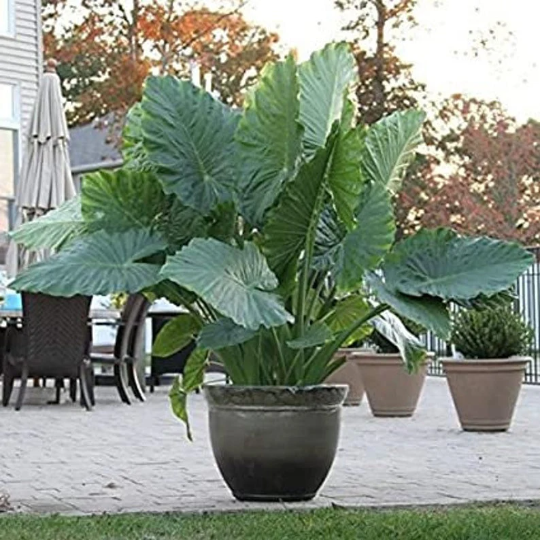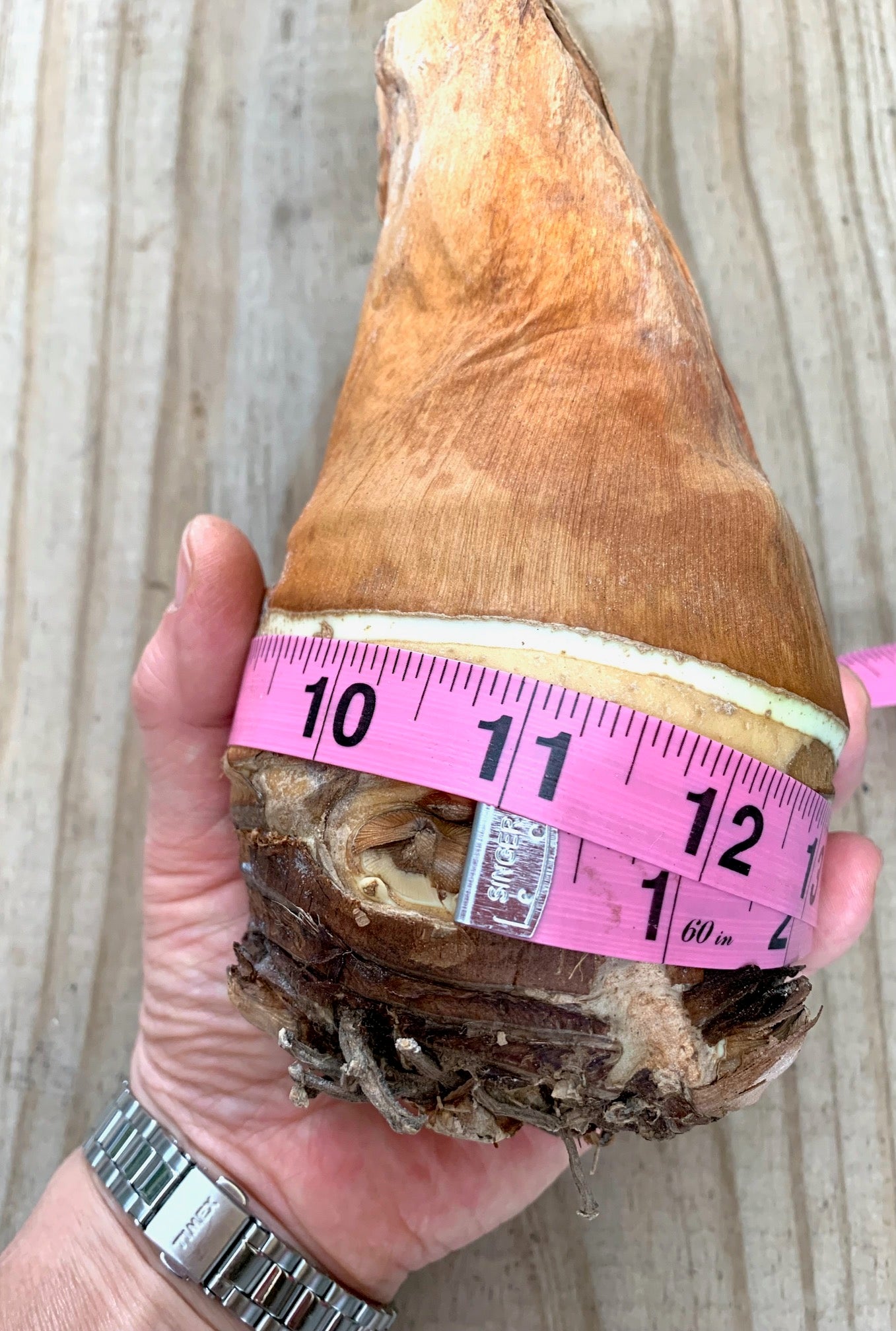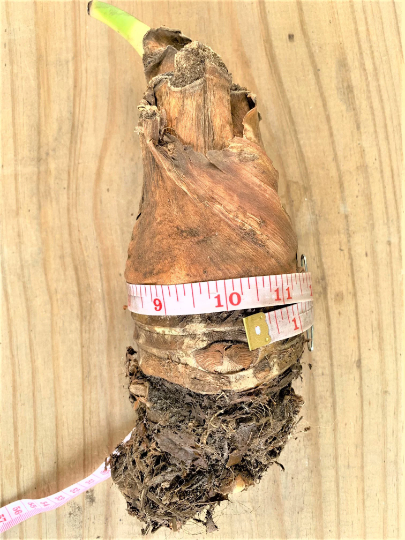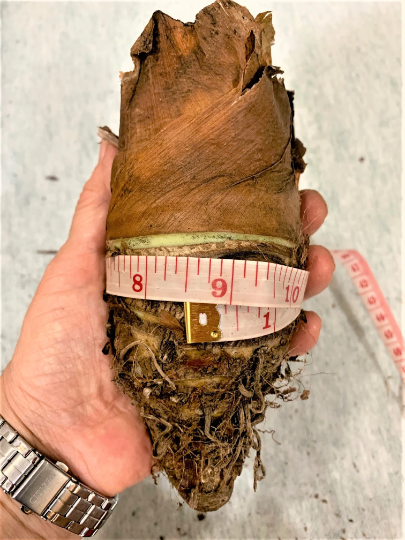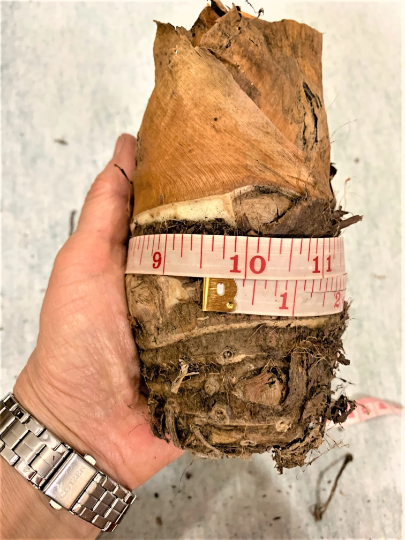Alocasia Up-Right Odora" Elephant ear 'BULB' **New Crop 2025 *See all listing photos for measurements!!!
Alocasia Up-Right Odora" Elephant ear 'BULB' **New Crop 2025 *See all listing photos for measurements!!!
Couldn't load pickup availability
** Bigger bulbs get bigger plant quicker.
Alocasia is easy care in the right location. It takes sun or shade but
seems to do best in part shade where it might get early morning or
late day sun, mixed with dappled light through the afternoon. These
plants do spread but not in a way that will get out of hand
For indoor growing, plant the tuber in a large pot (14- to 20-inches),
and get an extra large one if you want your plant to become truly
monstrous. Fill the pot about three-quarters of the way with potting
soil and then nestle the tuber in the center with the root side down.
Finish filling the pot the soil; the tuber should be about eight
inches deep.
Elephant ears need bright sunlight when grown indoors, but nothing too
harsh. If you notice the leaves are looking bleached or singed, move
it to a dimmer spot or add a sheer curtain. Outdoors they do well in
partial shade.
Water
Elephant ears like to stay consistently moist, but not soggy. Be
especially careful with watering if you use a pot without drainage
holes. Always test the soil with your finger first. Humidity is also
important to elephant ears, so it’s a good idea to set the pot in a
saucer of water elevated by pebbles. (The pebbles will prevent the
roots from sitting directly in the water, which will cause rotting.)
Fertilizer
Fertilize elephant ears every two weeks with an all-purpose liquid
fertilizer. Stop fertilizing in winter to allow your plant to rest.
Dormancy
It’s not unusual for elephant ears to die back during the winter
months. If the leaves start turning brown and falling off, it’s
probably not dead—it’s just getting ready for its winter slumber. Cut
off all the foliage and stop watering until you see new shoots appear
in spring. If your plant does not go dormant, you should still reduce
(but not completely stop) watering during the winter months.
Toxicity
Elephant ear leaves and stems contain oxalic acid, a toxin in the form
of sharp crystals that is toxic to pets and humans. It can cause
severe swelling in the throat, mouth, and lips and vomiting, and may
also irritate your skin on contact.
Share
